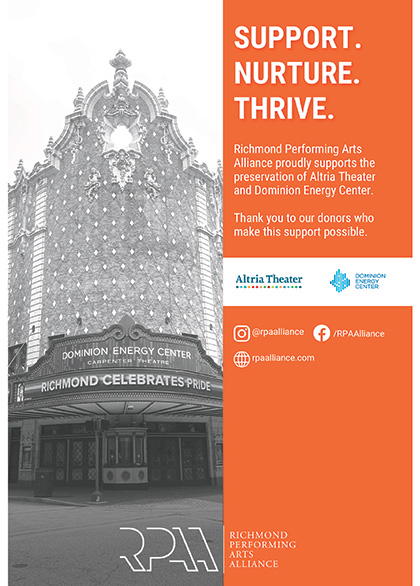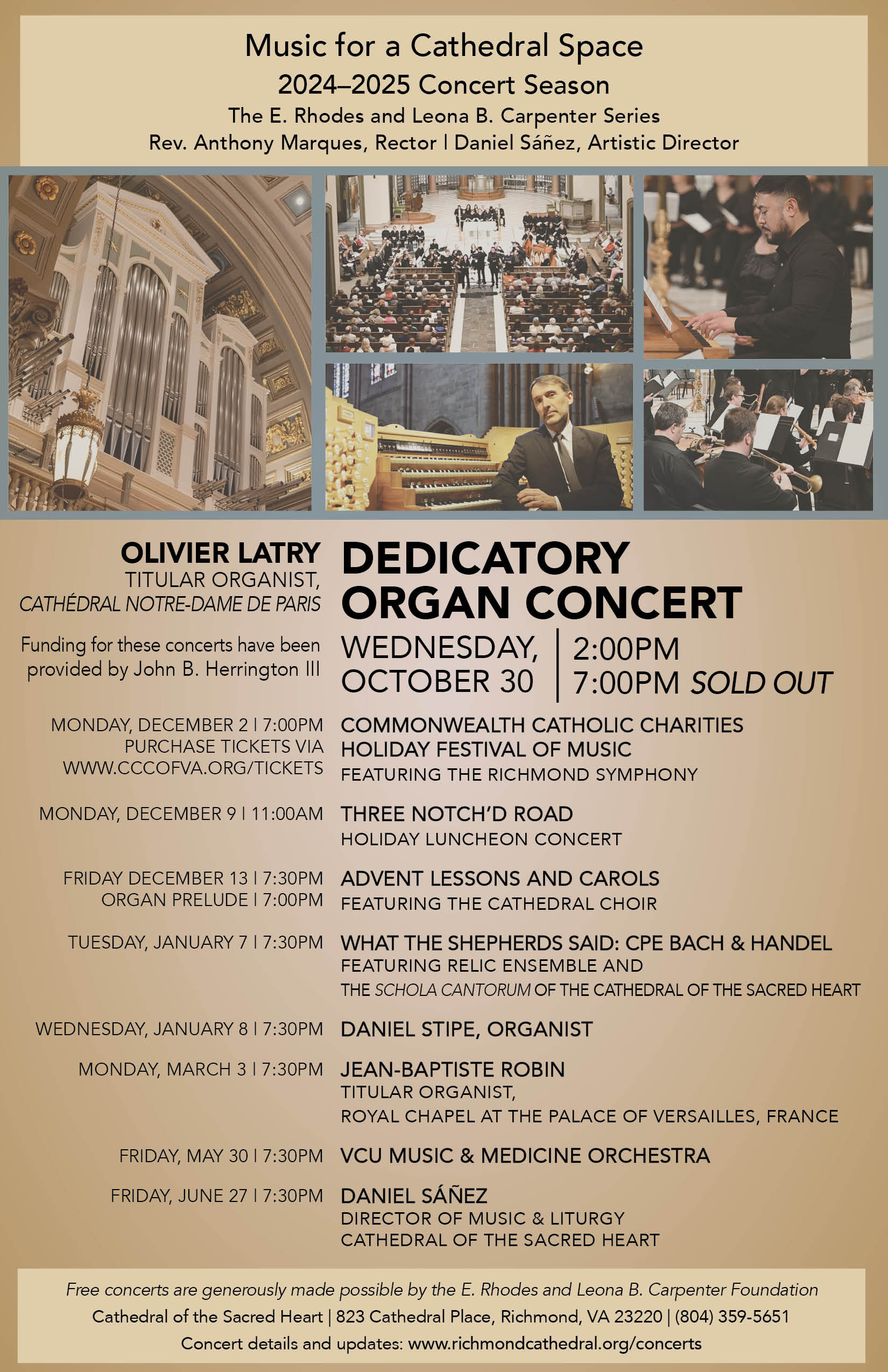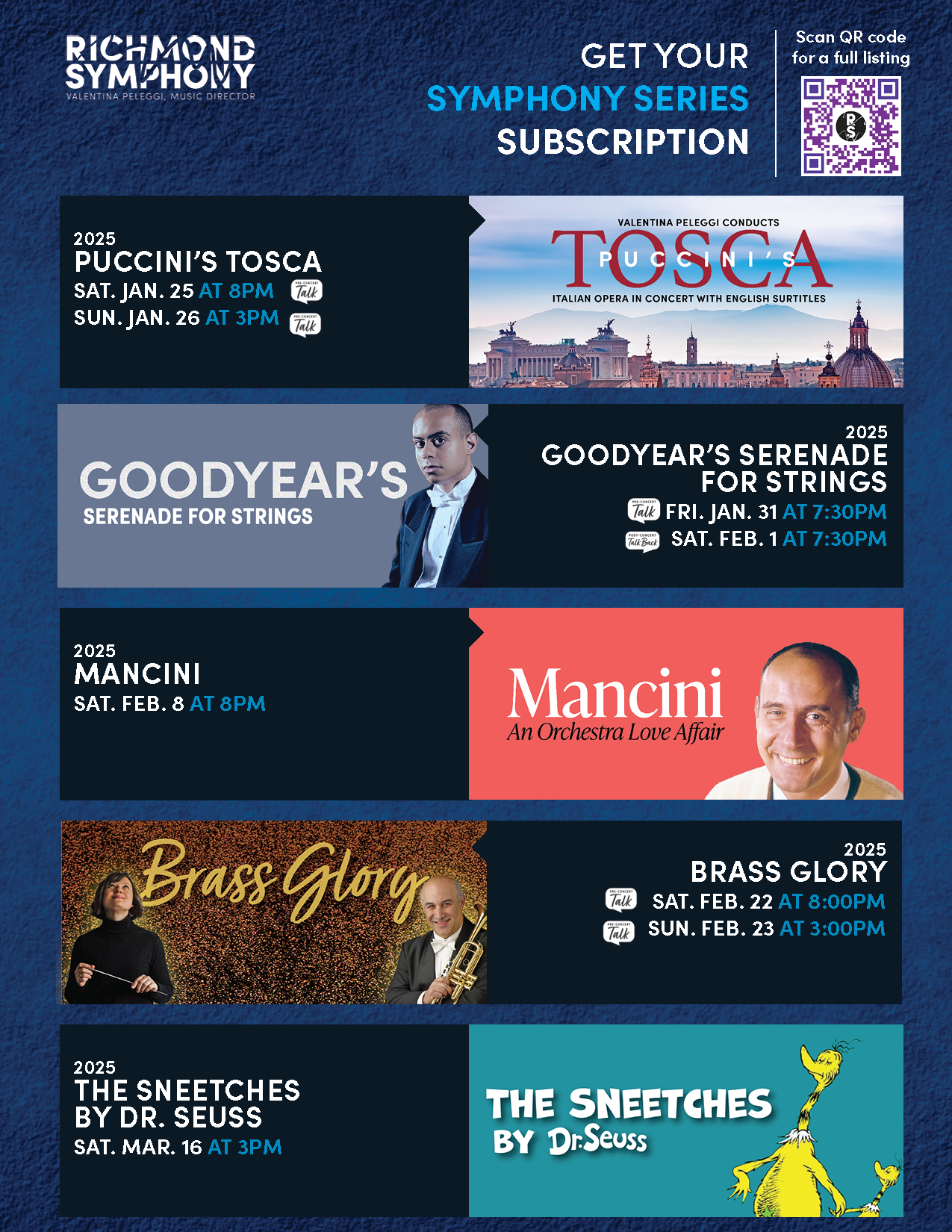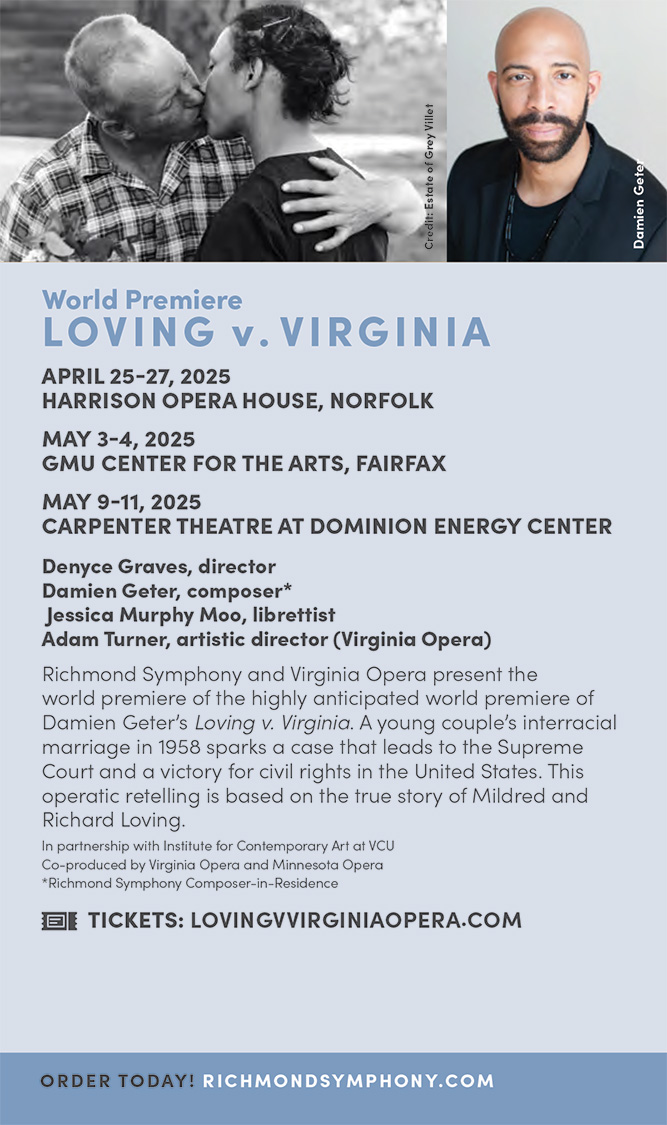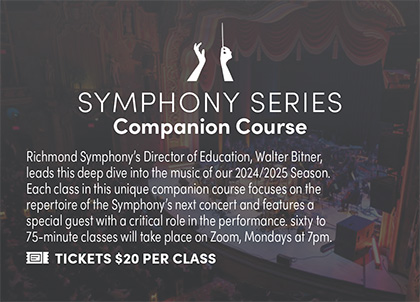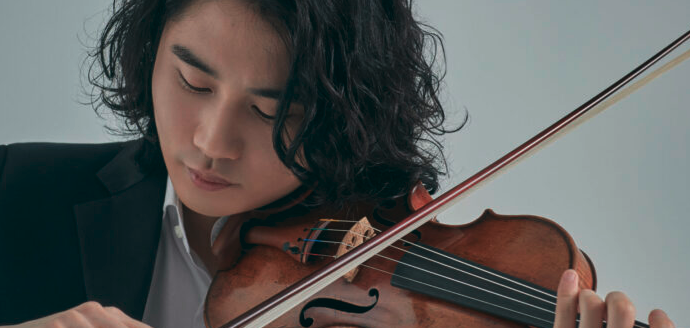
TCHAIKOVSKY'S FIFTH
Valentina Peleggi | Conductor
Inmo Yang | VIOLIN
Conni Ellisor (b.1953)
| A Woman Without Apology | |
Jennifer Higdon (b.1962) | Violin Concerto | |
Massenet (1842 - 1912) | Méditation from Thaïs | |
INTERMISSION | ||
Tchaikovsky (1840 - 1893) | Symphony No. 5 in E minor, Op. 64 | |
To honor International Women’s Day, Music Director Valentina Peleggi and the Richmond Symphony spotlight the invaluable contributions of women to the music world. Audience favorite Inmo Yang joins as the soloist, performing under Peleggi’s direction for the first time. He will also deliver the iconic solo violin part in Méditation from Jules Massenet’s Thaïs. This program builds in what Peleggi has envisioned as “an emotional and musical crescendo” that culminates in Tchaikovsky’s Fifth Symphony, a work also linked to the presence of a remarkable woman.
Conni Ellisor: A Woman Without Apology
Born in Wichita in 1953, Conni Ellisor has bridged worlds of classical and Americana with works like Blackberry Winter and Whiskey Before Breakfast. A Juilliard-trained violinist, Ellisor has held significant positions with the Denver Symphony, the Boulder Philharmonic, and the former Nashville Chamber Orchestra. She is also an experienced arranger and session musician with a passion for music education.
Ellisor’s A Woman without Apology, co-commissioned by the Richmond Symphony and premiered in 2024, responds to societal pressures on women to conform. Ellisor recalls being told to smile in public while dealing with her mother’s cancer diagnosis decades ago. This memory inspired her to compose a work that reflects the strength of women embracing their authentic selves.
Central to the piece is a song Ellisor has sung to herself throughout her life with the lyrics: “I have a right to be here.” The composition also incorporates a technique she discovered during studio work, symbolizing voices being suppressed. Built on the interval of the open fifth, the piece radiates warmth and inclusivity, embodying Ellisor’s vision of self-expression without apology.
Jules Massenet: Méditation from Thaïs
Jules Massenet, a leading French opera composer of the late Romantic era, created Méditation as a wordless interlude in his 1894 opera Thaïs. The piece captures the heroine’s spiritual awakening as she abandons her luxurious life in Egypt during the early years of Christianity for a path of redemption.
The solo violin represents Thaïs’s internal struggle, its melody stretching with yearning into distant keys before resolving into serenity. This exquisite work has transcended its operatic origins to become a cherished piece in the violin repertoire, celebrated for its emotional depth and beauty.
Jennifer Higdon: Violin Concerto
Jennifer Higdon is one of America’s most performed living composers. Born in Brooklyn and raised in Atlanta and rural Tennessee, she discovered classical music at age fifteen and began teaching herself flute. Her journey into composition started when a professor’s request to write a brief piece sparked her enduring interest in the mystery of creating music. Higdon’s emotionally resonant and colorfully textured works are in high demand.
blue cathedral (2000) marked Higdon’s breakthrough, and her concerto writing has become particularly celebrated. The Violin Concerto (2008), which earned her a Pulitzer Prize, was inspired by her collaboration with virtuoso Hilary Hahn. Its movements explore the violin’s expressive capabilities, from the excitement and intensity of the first movement (“1726”) to the dialogues between the soloist and members of the orchestra in a series of chaconnes or repeated chord progressions in the second movement (“Chaconne”) and the adventuresome virtuosity of “Fly Forward.” Higdon’s Violin Concerto exemplifies her concept of concertos as “journeys of the imagination” that “confront and stretch an instrument’s limits and discover a particular performer’s gifts.”
Pyotr Ilyich Tchaikovsky: Symphony No. 5
in E Minor, Op. 64
Tchaikovsky’s Symphony No. 5 was composed in 1888 during a period of creative renewal following personal struggles, including coming to terms with his failed marriage and his position as a gay artist in 19th-century Russia. It marks the next stage in his complex, platonic relationship with his patron Nadezhda von Meck, who had played an important role in the creation of Tchaikovsky’s Symphony No. 4. Their correspondence offered profound emotional support.
The Fifth Symphony reflects Tchaikovsky’s ongoing preoccupation with fate and its impact on human happiness, themes he explored in earlier works like the Fourth Symphony. A recurring motto theme in the Fifth embodies a struggle between despair and hope.
Following a moody introduction that presents the fate motto, the opening movement unfolds dramatically but then dies out in an anticlimax hinting at a cyclical return to darkness. The Andante gleams with a yearningly lyrical melody, while the third movement offers a charming waltz that serves as a respite. In the finale, Tchaikovsky confronts the tensions left unresolved at the end of the first movement, transforming the work’s earlier somber mood into a triumphant conclusion.
Despite the composer’s mixed feelings about the symphony’s merit, the Fifth has become a cornerstone of the orchestral repertoire. Its journey from darkness to light, interwoven with Tchaikovsky’s distinctive emotional intensity, continues to captivate audiences.
